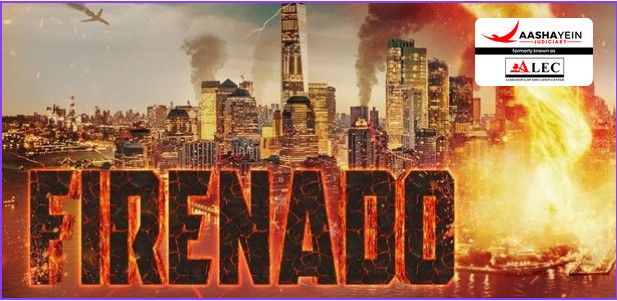A firenado, or fire whirl, is one of the rarest yet most terrifying natural phenomena, capturing public attention due to its surreal and destructive power.
Recently, during the Palisades Fire in Los Angeles, viral footage of a swirling column of flames and smoke showcased the dramatic intensity of this occurrence. But what exactly is a firenado, and how does it form? Let’s delve into its characteristics, historical context, and the science behind its formation.
What is a Firenado?
A firenado (fire + tornado) is a spinning vortex of hot air and gases generated by intense heat from a fire. These columns can carry not only flames but also smoke, debris, and even embers. Unlike tornadoes connected to a cloud base, firenado form directly from the heat of a fire.
When the rising hot air combines with turbulent winds, it creates a vortex of fire. The result is a fiery whirlwind capable of causing widespread destruction. Firenado are distinct from other fire phenomena, such as firestorms, due to their spinning, tornado-like behavior.
Capabilities and Dangers of a Firenado
Firenado amplify the destructive power of wildfires. By sucking in air, they intensify the fire, spreading flames along their path. They can leave a trail of devastation similar to that of an EF-2 or EF-3 tornado, with wind speeds that can reach up to 143 mph (230 kph).
One of the most devastating firenado occurred during the 2018 near Redding, California. This fire tornado, spanning three football fields, tragically claimed the life of a firefighter. It also produced an ice-capped cloud that rose 7 miles (11 km) into the atmosphere, showcasing its immense power.
You can also read the latest judgment by visiting [Latest Judgment].
For more information, visit [Aashayein Enquiry Section]
Historical Context of Firenado
While the term "firenado" may sound modern, the phenomenon has been documented throughout history.
- 1923 Tokyo Earthquake: A massive fire whirl emerged after a devastating earthquake, claiming approximately 38,000 lives. This event remains one of the deadliest firenado in recorded history.
- 2018 Carr Fire: Wind speeds during this event were comparable to an EF-3 tornado, highlighting the destructive force of firenado.
Characteristics of Firenado
- Comparable to EF-2 or EF-3 tornadoes, with winds exceeding 140 mph.
- Arises from the combination of intense heat and turbulent winds.
- Amplifies wildfires, spreads flames, and destroys everything in its path.
- Unlike traditional tornadoes, firenado lack a connection to a cloud base.
Current Situation in California
As of now, California continues to battle multiple wildfires, including the Palisades Fire. With over 29,000 acres burned, at least 24 lives lost, and more than 12,000 structures destroyed, the threat of firenado complicates firefighting efforts. These swirling columns of fire add an unpredictable element to an already dangerous situation.
The emergence of firenado during these events further complicates firefighting efforts.
- Firenado can reach wind speeds comparable to EF-2 tornadoes.
- The term “fire whirl” encompasses various types of fire-induced wind phenomena.
- The first verified firenado occurred during the 2003 Canberra bushfires.
- The 1923 Tokyo fire whirl was one of the deadliest, killing around 38,000 people.
- Firenado are distinct from tornadoes, lacking a connection to a cloud base.
Conclusion
Firenado are a stark reminder of nature's destructive power. As climate change exacerbates wildfire conditions, understanding phenomena like firenado becomes increasingly important. By studying their formation and behavior, scientists and firefighters can better prepare for these rare but deadly events, ultimately saving lives and minimizing destruction.Nature’s fury is unpredictable, and firenado are a testament to its awe-inspiring yet terrifying power.

